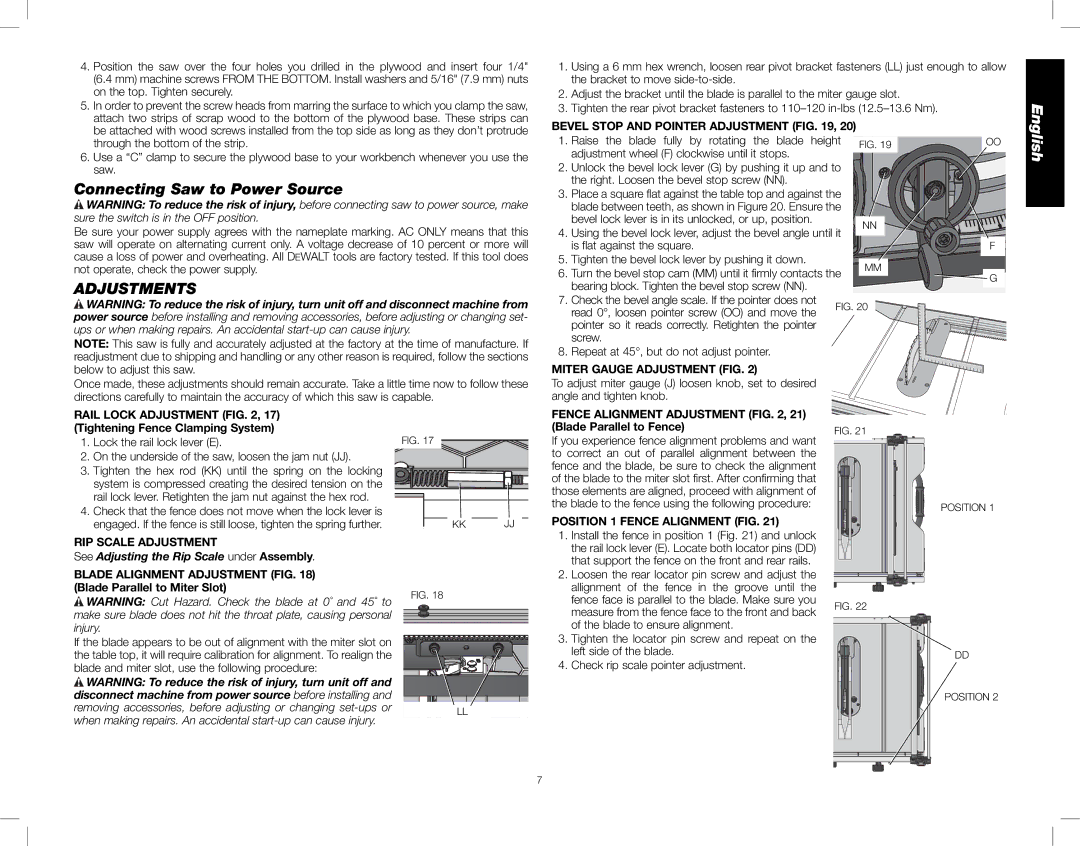DWE7490X specifications
The DeWalt DWE7490X is a powerful and versatile job site table saw, designed for professionals and serious DIY enthusiasts alike. This table saw combines high performance with a range of features and technologies that make it an essential tool for a variety of woodworking projects.At the heart of the DWE7490X is its robust 15-amp motor, which delivers an impressive 4800 RPM. This level of power ensures that users can easily cut through hardwoods and other dense materials without bogging the saw down. The saw's 10-inch blade provides optimal cutting capacity, making it efficient for a wide range of applications. One of its standout features is the rack and pinion fence system, which ensures accurate, smooth adjustments. The fence can be easily adjusted to various widths, allowing for precise cuts and increased productivity.
Another key characteristic of the DWE7490X is its patented portable design. The saw features a foldable stand that allows for easy setup and transport. Weighing just 90 pounds, it is lightweight enough for most users to move around construction sites without hassle. This portability is complemented by its onboard storage, which securely holds accessories such as the push stick, rip fence, and miter gauge when not in use.
In terms of safety, the DWE7490X is equipped with a blade guard and anti-kickback pawls, which help protect users by preventing unexpected accidents during operation. Additionally, the saw's large on/off switch is designed for easy operation, even with gloves on.
The DWE7490X also includes a versatile dust collection system that connects to a shop vacuum for improved cleanup. This helps maintain a cleaner work environment and enhances visibility while cutting.
With a cutting depth of 3-1/8 inches at 90 degrees and 2-1/4 inches at 45 degrees, users can count on the DWE7490X to handle a wide variety of woodworking tasks with ease. The combination of power, portability, and precision makes the DeWalt DWE7490X an outstanding tool for anyone serious about their woodworking projects. Whether tackling large sheets of plywood or intricate cuts in hard materials, this table saw is designed to perform.

